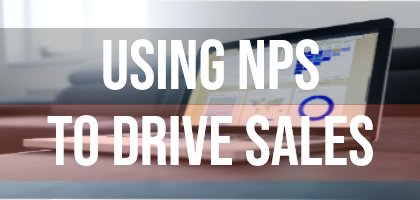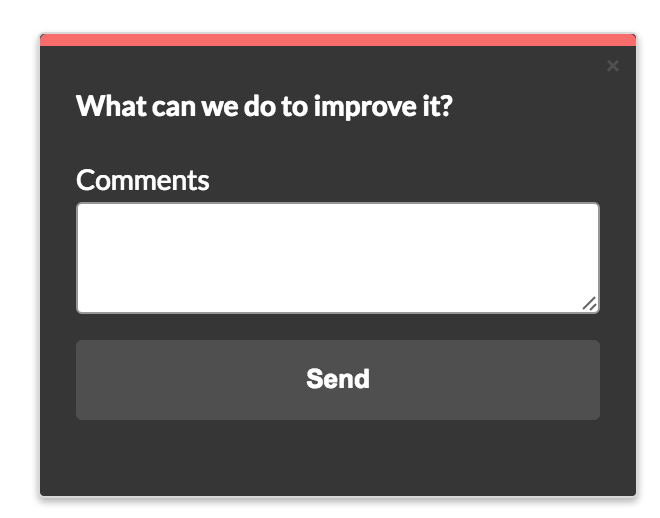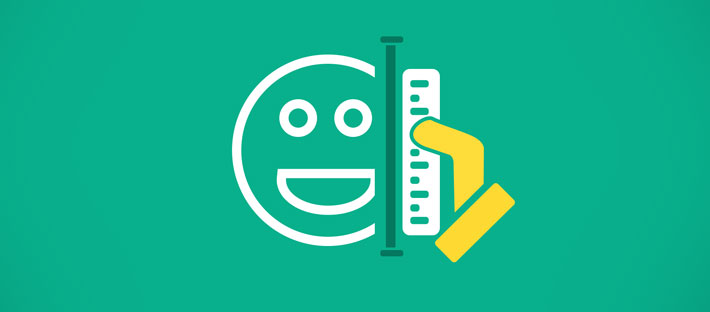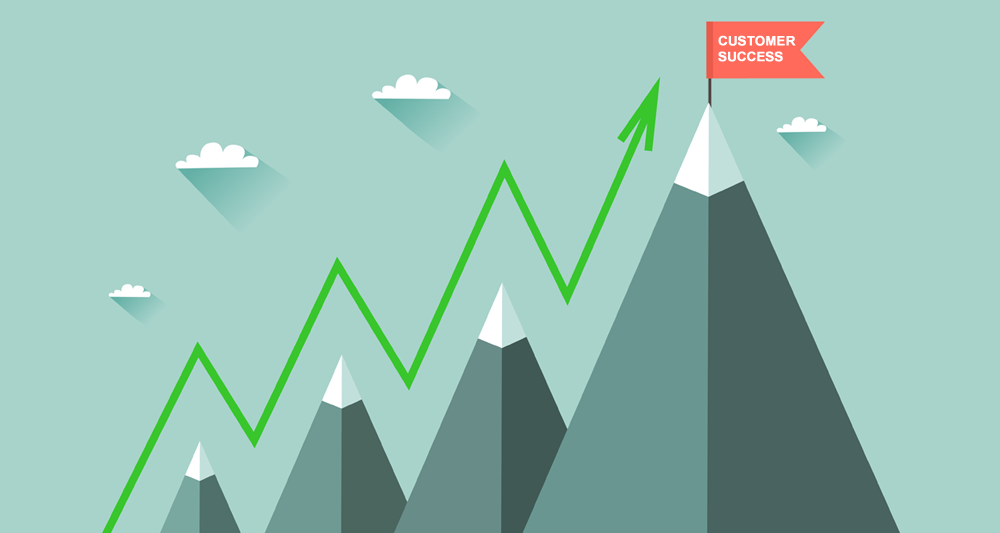One of the biggest pain points for startups is watching customers churn.
Extensive time and resources go into nurturing the customer and they end their subscription before the trial ends. This is why I always emphasize the importance of focusing on retaining a user and providing help rather than spending time thinking about how to acquire new users.
The good thing is that it’s never too late to set up a process to lower your cancellation rate and increase the chance of you winning back a cancelled customer. One of the best tactics that you can use to win back your cancelled customers is by using cancellation surveys. Just sending out a survey itself won’t provide a lot of results. Basic unplanned surveys will result in low response rates and inaccurate results. You need a process for identifying the problem and the reason behind the cancellation to be effective.
Start with the customer
Your customer is the one that is taking out their credit card and paying for your product. It is extremely important that you consistently talk to your customers and hear their feedback on how you can improve the product. It all starts with the customer and understanding what they want before they even think about canceling.
Alex Turnbull from Groove says,
“Learning the reasons why your customers cancel is painful, but it’s unquestionably valuable. I did nothing to systematically collect and measure the feedback I was getting. There’s no way around it, it still sucks when people point out where you’ve failed them. But actively collecting and leveraging that feedback has become one of the most important drivers for continuous improvement at Groove.”
We should actively collect feedback from the customer before they even think about canceling their account with you. But let’s assume the user does decide to cancel. What can you do about it?
Find out why the customer cancelled
As we mentioned above, one of the best ways to begin this process is by using a cancellation survey. There are many ways to approach this, but a simple thing you can do in the beginning is by building out what they call a cancellation exit survey. A cancellation survey can appear in many forms, but the most basic one would be where you swap out the “cancel subscription” button with a question and a series of responses. It can look something like this:

This can be created easily with a native one-click survey tool like YesInsights. All you have to do is create a one-click survey and embed it directly on the cancellation page of your SaaS product. The next thing you want to do is to create trigger based actions based on the response that they select. We make it easy at YesInsights for you to do this via our Zapier integration. Surprisingly, these types of cancellation survey replacements work rather well.
I was recently subscribed to an event listing service. When I went to cancel, they prompted me with something similar to the picture shown above instead of a cancellation button. And guess what? I ended up selecting the response to extend my trial for free for an additional 7 days. Now I’m a paying customer of the product.
Sometimes a customer doesn’t really want to cancel. Perhaps they just haven’t been nurtured long enough to understand the value of your product. This cancellation survey will help.
The second type of cancellation survey will be one that you send through an email. You want to only send this survey after you’ve tried implementing the solution above and the customer decides to cancel anyway. It’s the perfect time to reach out to gain even more feedback and learn why the customer decided to churn.
Usually, email cancellation surveys start with an open ended question related to the cancellation. It should look something like this:
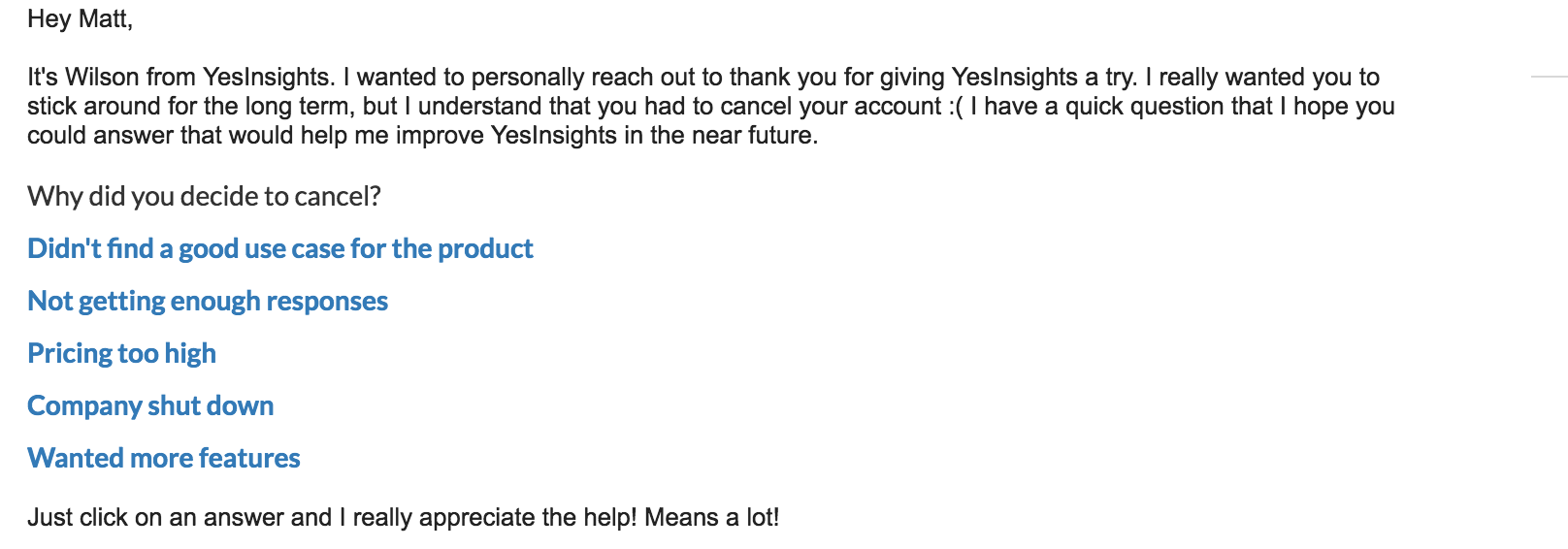
I created this simple one-click survey with our own tool YesInsights and it receives a pretty high response rate. Traditional survey tools will usually get 5-10% response rate on surveys like this. But an inline survey like one shown above will get up to 75% response rates. After the customer clicks on a response, it will redirect them to a custom landing page where they have the option to enter additional comments.
The third method you can use to set up a cancellation survey is by using a website feedback or JS widget that you can make appear on the cancellation page. These are triggered surveys and will slide out when the user is about to make an action on the page. You can create one easily with YesInsights and it will look like this:
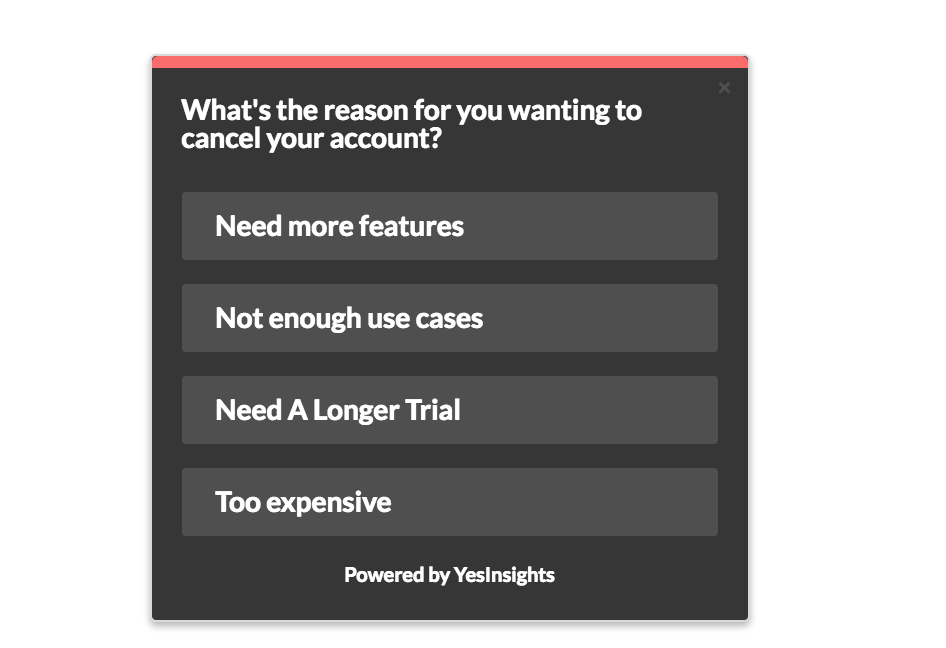
This is a great way to capture feedback immediately from the user when they decide to cancel.
Identifying the problem and acting upon it
Once you’ve figured out why the user is canceling, it’s time to take this process to the next level. I’ve learned that every customer cancels for a different reason from my experience and doing plenty of reading. But you should be able to analyze most of the data to see patterns of why your customer decided to cancel. This is how I like to break it down and find a solution for it:
Price Driven Reasons
Some customers cancel because your pricing is too high or your product is just out of their budget. Either they feel like they aren’t getting the best bang for their buck or they are bootstrapped and just don’t have the cash for your product. This does not mean that they don’t find your product to be effective or useful.
The solution for this will be offering discounts, extended trials, more educational materials/use cases, and marketing to the correct ideal customer profile. If we notice that a customer cancelled because they thought our pricing was too high, we might want to offer them a discount in a follow-up email or offer them a lower plan that suits them better. If most people are canceling because of a pricing factor, we might want to optimize our pricing to fit our target better.
Features Reasons
Another main reason for customer canceling is because your app doesn’t have enough features that they need. Or perhaps they discovered a competitor who’s offering a better solution with more features. The truth is that you can’t please every single customer and you can’t build features just because one customer wants it. Find the balance and take al feedback seriously. Then add their suggested features to your product roadmap for consideration.
A good solution for this problem would be to offer more educational materials. It could be in the form of blog posts, quick videos, infographics, eBooks, etc. Try offering more use cases for your current features, so that the customer can expand their horizons on how they can use your product.
There are many others ways to break it down but it’s usually dependent on the responses from your customers. What applies to a SaaS business is totally different than what applies to an e-commerce business.
Ongoing communication and feedback
Communication is the difference between a churned and retained customer. You need to be proactive with your customers and communicate frequently. This will help build a better relationship with your customers. Which means a few super awesome things. They will be more likely to become advocates for your business. perhaps even recommending you if you guys had to “break up”. They are likely to spend more money. And they will tell you how you can improve your product in the long term.
Close.io CEO Steli Efti equates talking to customers to going to the gym and eating healthy:
“Visiting customers is like working out or eating healthy: everybody knows they should do it, very few people actually do. And it’s not like we’re above others. We launched Close.io in January 2013. Our first customer visit? May 2014. It took us more than a year to set foot in a customer’s office. Isn’t that crazy?!?”
Depending on where you are in the world, it might not be possible for you to visit every customer, but you can always check in with them on a regular basis. Either through email or by picking up the phone and giving them a call.
Sending out well-planned user feedback surveys to see how they are doing is another great way to do this. Successful companies send out regular Net Promoter Score surveys to see what customers are thinking about their product. You too should make this a regular practice.
Your Net Promoter Score will enable you to segment your advocates (those willing to promote your product) and detractors (those who are unsatisfied with your product).
All customers are potential cancellations, and all cancellations are potential churn. The more you talk to them, the happier they will be. Keep this in mind and you’ll see lower churn rate.
Demanding feedback is another thing that you should consider adding to this process. I attended a conference recently and was approached by one of the conference’s host near the end of the event. He asked me, “What’s one thing I can do to make this conference better next year?” I said, “I think this year’s conference is good enough already!” and he responded, “I’m not letting you leave until you tell me at least one thing I can do to improve.”
It might sound rude, but it forced me to think of some things that he could potentially do better. Again, this was an in person example, but you can apply this by using the phone or email. It works the exact same way.
Another strategy that tends to work is sending swag to your most happy customers and delighting them. Small gifts such as t-shirts or gummy bears go a long way. We did this when I was running Growth at Iron.io and every customer that received the gifts was ecstatic.
I highly encourage that you start implementing this process, especially if you’re not already talking to your customers and getting feedback, Laying out a solid foundation from the very beginning is the first step to building a sustainable growth process for your startup.
You can begin this process by creating simple website feedback widgets and surveys that can be added to your triggered emails with YesInsights. Take our free trial for a spin and we’ll be more than happy to provide you and your company a personalized use case that will work for you for free.

